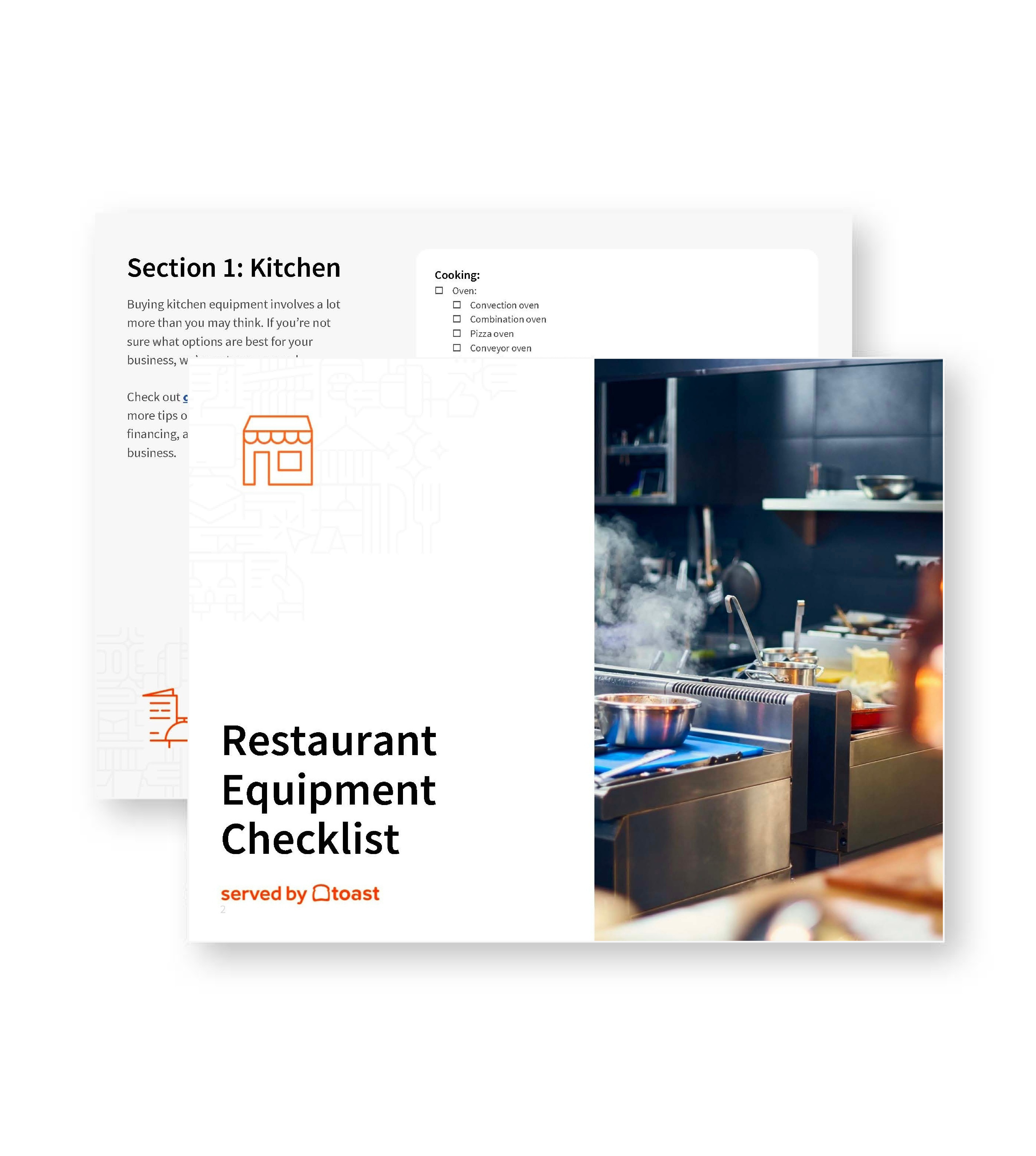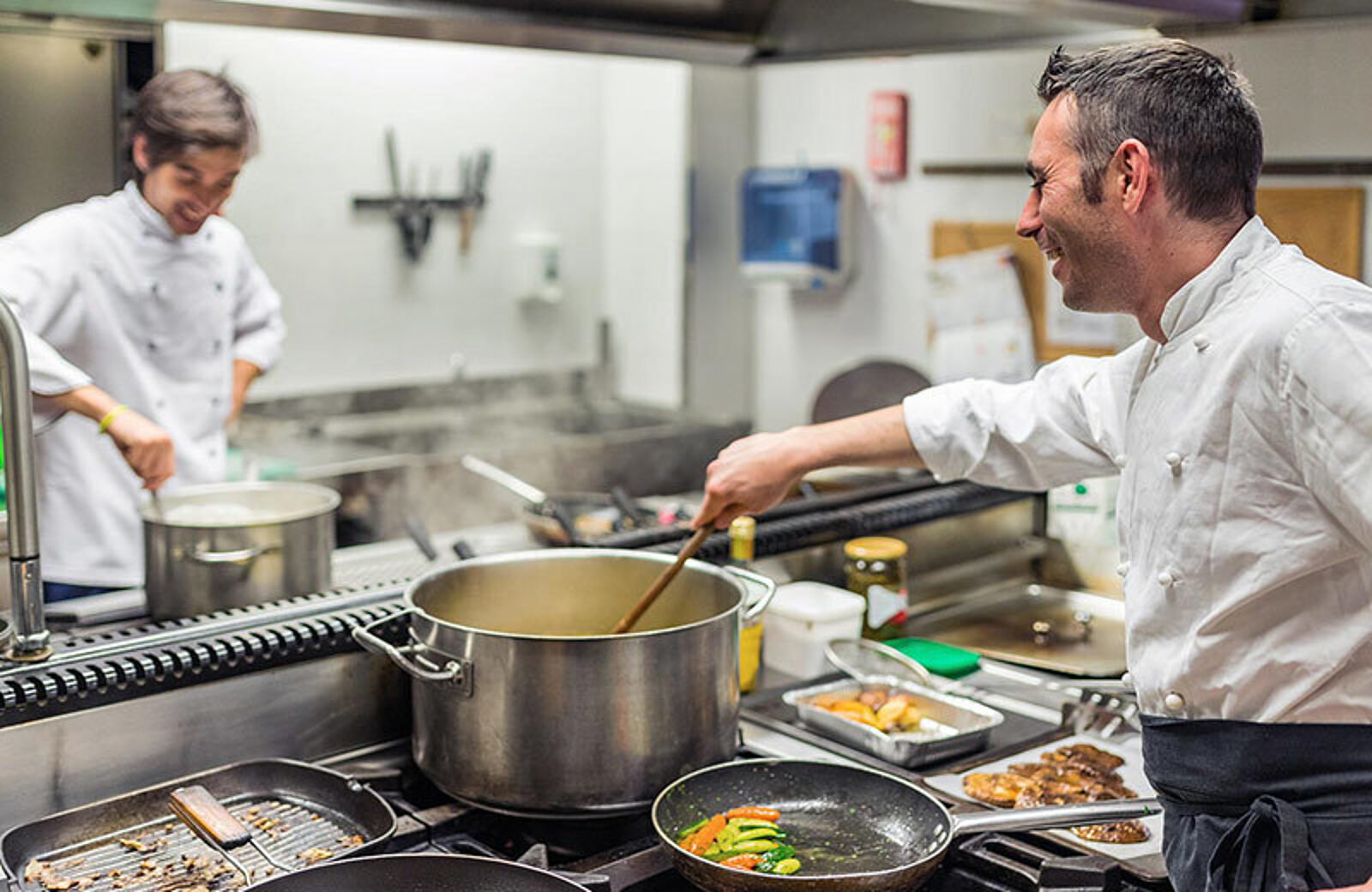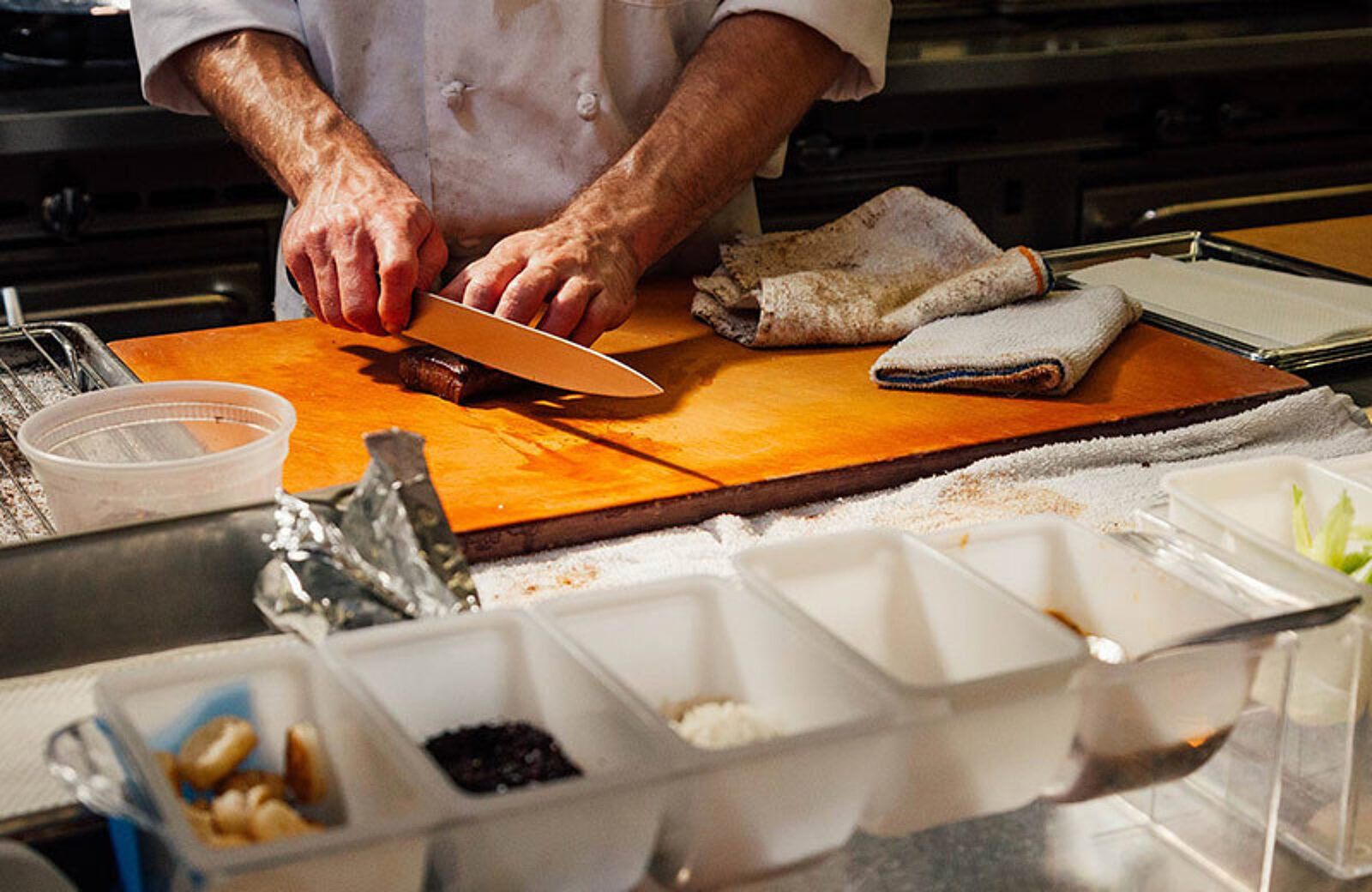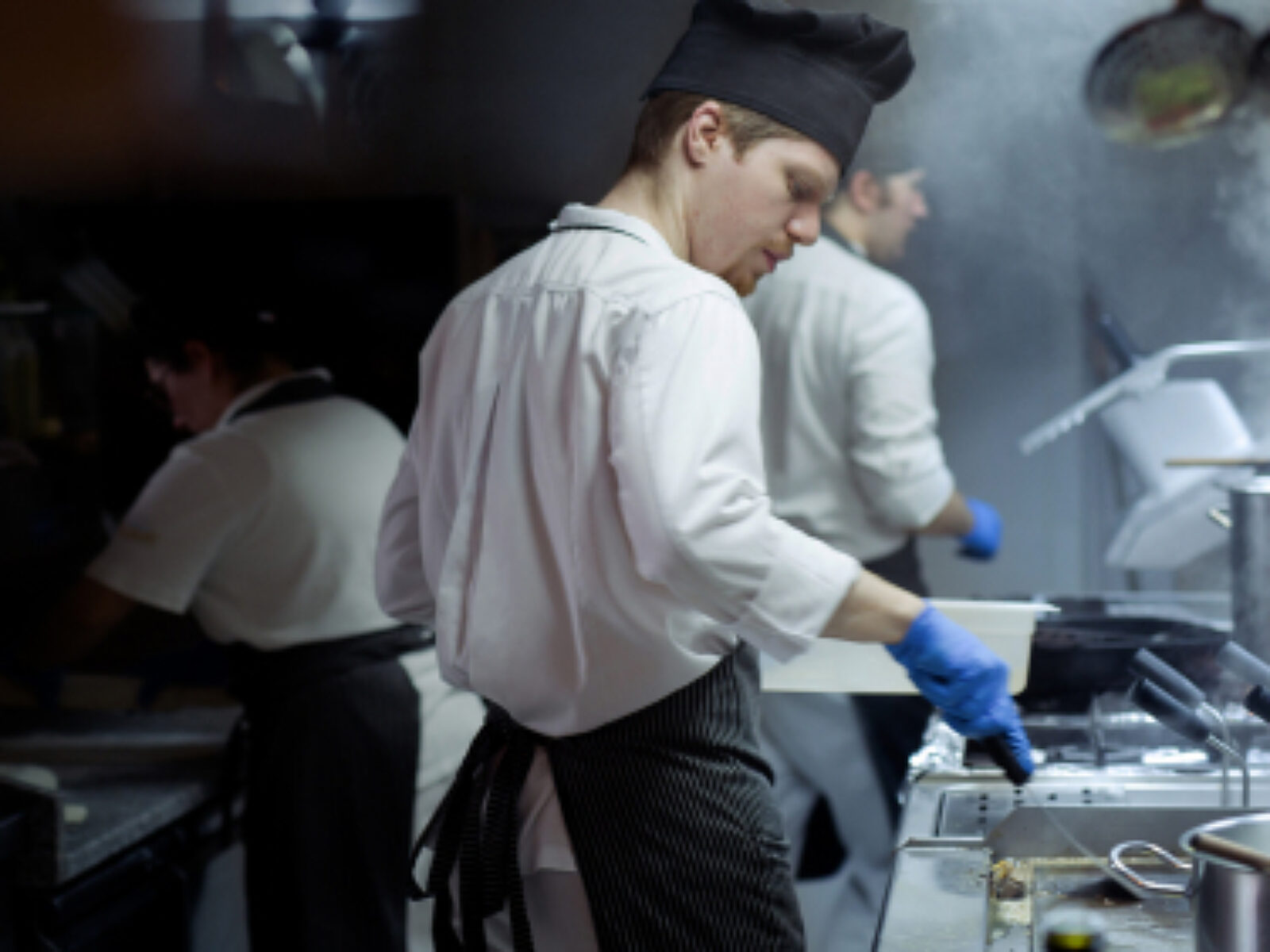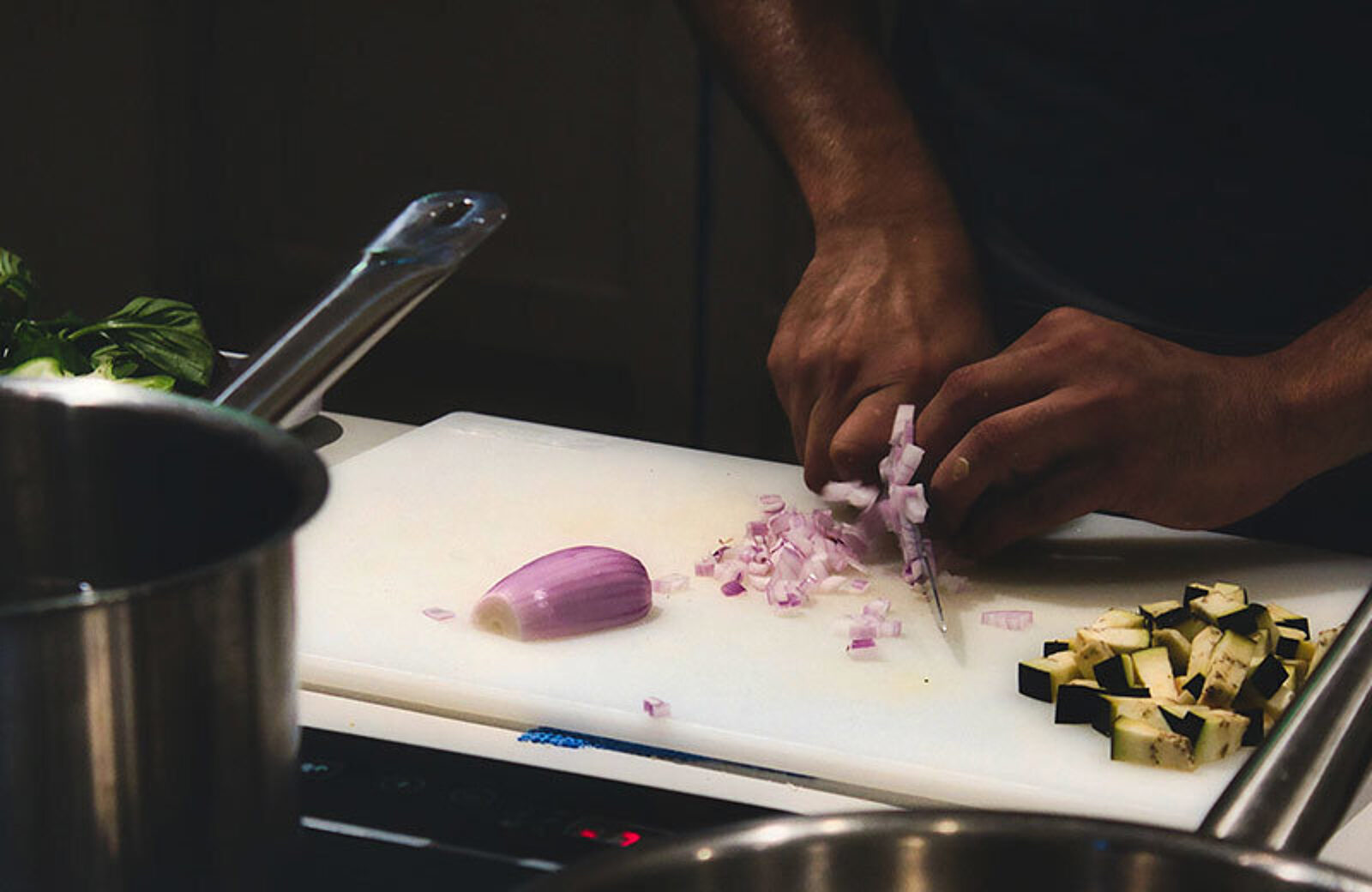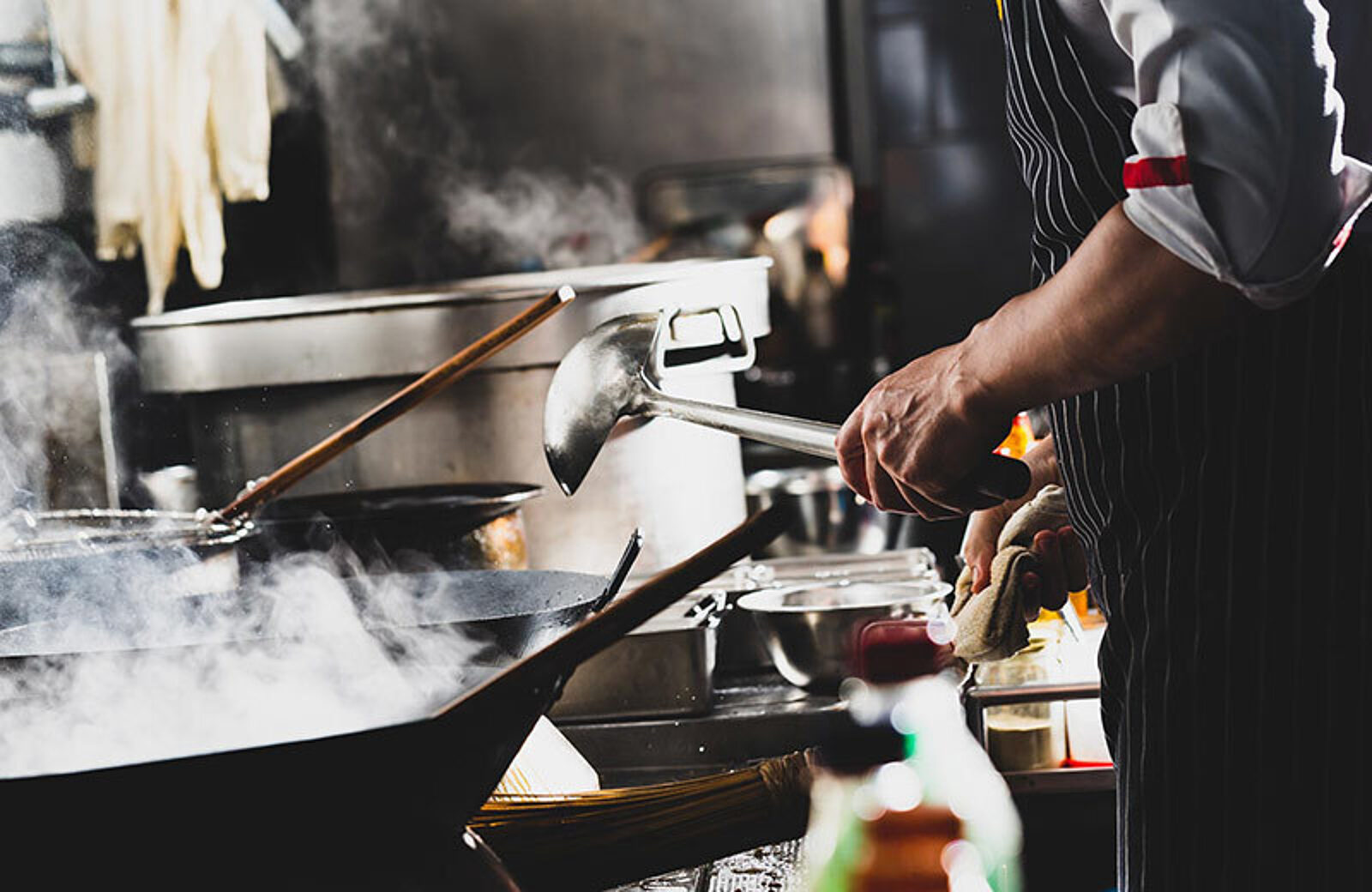
How to Make the Health Inspector Happy
Is your restaurant up to code? Learn how to train your team to avoid these common health code violations.

Ryan GromfinAuthor


Restaurant Health Inspection Checklist
This free checklist gives you all the tips and tricks you need to ace your next inspection.
When health officials announced that an outbreak of E. coli infections may have been linked to food served at Chipotle restaurants in Washington and Oregon in late 2015 and early 2016, a long shadow was cast over the popular fast casual chain’s reputation.
More than 50 people were infected with E. coli during this time. And even though the company responded with major changes to its food safety policies and practices, the business suffered in the aftermath. Sales dropped 13% from 2015 to 2016, and Chipotle only just started to turn things around.
Chipotle is a large-scale case, but it underlines the fact that health code violations are not only bad for brand image, they’re bad for business. More importantly, these violations can do real harm to your guests. The Centers for Disease Control and Prevention (CDC) estimates that, in the United States, 48 million people get sick from foodborne illnesses every year. Among them, 128,000 are hospitalized and 3,000 people die.
By putting the right food safety systems and precautions in place, you’ll keep your team and guests safe. Plus, you won’t have to sweat it every time your local health inspector walks through the door. Let’s take a look at some of the most common (and some less common) health code violations and how you can mitigate risks in your restaurant.
An important disclaimer before we dive in: Every state and country has different rules regarding restaurant health code inspections and health code violations. This article is meant to highlight common health code violations in the food and beverage industry. The suggestions listed here are designed to serve as general guidelines and may not be exactly correct in your jurisdiction.
For concrete answers and directions about the health code in your area, do your research and consult your local health department for food code regulations in your state. Though all codes are variations of the model proposed by the U.S. Food and Drug Administration (FDA), there’s no national standard code. Each state makes its own decisions as to what goes into these codes. By locating a copy of local standards, you’ll know exactly what inspectors are looking for. Click here to find your state’s food service codes and regulations.
Restaurant Cleaning Checklist
Download the Restaurant Cleaning Checklist, created in partnership with RestaurantSupply.com, to keep track of the cleaning tasks that need to be completed in your restaurant.

Common Health Code Violations and How to Avoid Them in Your Restaurant
1. Time and Temperature
Together, time and temperature play a big role in determining the safety of the food in your kitchen. Keeping your food at a safe temperature for an allotted amount of time is a simple and effective way to protect customers from food-borne illnesses and keep health inspectors happy.
Usually, the type of food determines the correct time and temperature precautions. For example, mayonnaise kept at room temperature is safe, but only for a few hours. After that, it becomes dangerous to anyone who might ingest it. But if kept at a cooler temperature in a refrigerator, mayo can stay safe for months.
Food becomes dangerous when it falls into the temperature danger zone. This industry term refers to food temperatures between 40° F and 140° F — prime time for bacterial growth. The longer your food sits in this range, the higher the risk that it’ll become unsafe.
The United States Department of Agriculture (USDA) recommends never leaving cold foods out of refrigeration for more than two hours. Likewise, hot foods shouldn’t be left at room temperature for more than one hour. After the food’s been sitting out longer than that, it’s time to throw it out. Remember: Keep cold food cold and hot food hot.
How to keep food safe from the danger zone.
Here are some time and temperature recommendations for keeping food safe:
Keep hot food hot at or above 140° F by keeping cooked food in chafing dishes, preheated steam tables, warming trays, or slow cookers.
Keep cold food cold at or below 40° F by placing food in containers on ice.
Keep temperature logs. Check thermometers two or three times per day to make sure food products are stored at the right temperatures.
When cooling cooked food and storing for leftovers, cool quickly using shallow containers and refrigerate at 40° F or below within two hours.
When reheating food, make sure it’s reheated thoroughly. As a precaution, check the food’s internal temperature before consumption.
Restaurant Health Inspection Checklist
This free checklist gives you all the tips and tricks you need to ace your next inspection.

2. Food Storage
Many food-borne illnesses occur accidentally as a result of cross-contamination from poor inventory storage. One of the most common ways this happens is when juices from one inventory item drip onto other food items.
Here’s an example: If chicken juices drip onto beef in storage, chances are the beef won’t be cooked at a high enough temperature to kill the chicken bacteria. That’s because raw chicken must be cooked to a minimum safe internal temperature of 165° F, while the minimum safe internal temperature of beef is 145° F.
How to properly store food to avoid cross-contamination.
To prevent cross-contamination, consider a safer storage strategy. If you need to store different items vertically, follow this order from top to bottom:
- Raw Vegetables
Cooked Vegetables
Cooked Meats
Cooked Seafood
Raw Seafood
Raw Beef
Raw Pork
Raw Chicken
Have your team do cold-storage inspections at the end of every night to make sure products are stored in the proper places.
3. Cross-Contamination
As with storage, bacteria can be transferred from one food item to another via mishandling.
If a cook grabs a raw burger and places it on the grill but doesn’t properly wash their hands before grabbing a bun, there’s a pretty good chance that the bacteria from the burger is now on that bun — meaning it’s no longer safe for your guests to eat.
Most cooks and back-of-house staff are trained on tactics to avoid cross-contamination, such as switching out cutting boards, washing hands when going from handling meat to handling vegetables, and so on. But it’s the less obvious situations you have to keep an eye out for.
How to train your team to avoid cross-contamination.
As a base-level standard, make sure your cooks and other kitchen workers are ServSafe-certified. ServSafe is the industry standard for training restaurant employees to handle food safely. You can learn more about ServSafe and its certifications here.
Additionally, make sure your restaurant has hand washing stations on your cooking line, and train your team on when and how to wash hands. All employees must wash their hands after returning from the restroom, after touching their face or hair, or after eating or drinking.
Be sure to train your team to use the proper utensils and supplies for each food item, like color-coded, food-specific cutting boards.
4. Personal Hygiene
The amount of bacteria humans are exposed to daily is pretty enormous (and kinda gross). It’s your job to keep your restaurant’s kitchen as clean and safe as possible. Be mindful about what (and who) comes into your kitchen, and how you can best protect your staff and guests.
Hepatitis is an infection commonly spread from contact with bodily fluids. All over the country, hepatitis A outbreaks have made headlines in recent years. So a word of warning: Just a quick wash of the hands isn’t enough to do the job of removing bacteria. Bacteria and illnesses can live under fingernails, higher up on your arms, and can even be passed from hands to clothing. In addition to practicing healthy hygiene habits, it may be wise to encourage staff to get immunized for hepatitis A.
How to promote personal hygiene in your restaurant.
Make sure employees are washing their hands with antibacterial soap and hot water, scrubbing up to the elbows and under the nails for twenty seconds every time. A tip to make sure you’ve scrubbed for the right amount of time is to sing the happy birthday song twice in a row.
This goes for when employees arrive for work, before they handle food, after they’ve used the bathroom, and whenever they’re going to be working with different food items. If there’s ever a moment where someone wonders if they should wash their hands, chances are they need to.
You can also work to ensure that your back-of-house employees are wearing clean, washed clothing daily. In a perfect world, they will change into a uniform at your restaurant and then leave the uniform there at the end of the shift to cut down on potential external contaminants.
Another way your employees’ personal hygiene and health can lead to health code violations is if they come to work sick. You may be short on staff for a shift, but it’s better to have an employee stay home than spread illness among your team or guests.
5. Chemical Usage and Storage
In the kitchen, take a careful look at what products you’re using to clean surfaces and how effective they are. All too often, restaurant staff aren’t properly trained on how, when or where to use cleaning chemicals.
An important distinction here: Clean is different than sanitized. A clean surface means it’s free of visible dirt and crumbs. But that doesn’t mean it’s 100% sanitary. For all you know, there could have been raw chicken on the surface just moments before.
Sanitized means the surface is free from 99.9% of bacteria (it’s next to impossible to get that last 00.1%). And only the right chemical combined with the right process will help you achieve true sanitation.
How to train your team to use cleaning products safely and effectively.
Make sure your back-of-house team knows how to properly sanitize their work spaces beyond just a surface cleaning.
One thing you can do is hold a meeting with your cleaning supplies vendor and conduct mandatory training with your staff. After the training, provide your team with detailed documentation and test everybody on the information once per quarter.
For more information on food service chemicals, check out this helpful guide.
The Less-Common (but Just as Important) Health Code Violations and How to Avoid Them in Your Restaurant
The following health inspection checklist items aren’t likely to cause you to fail, but they can still deduct points from your score and put your guests at risk. And nobody wants that.
6. Back of House Serviceware
If you’re going to keep spoons, tongs, and other utensils on the line for use with raw proteins and other food items, you must keep them in water above 165° F. Change this water any time you see visible debris. Never mix utensils designated for raw proteins like chicken and beef with ready-to-eat food like lettuce or tomatoes.
7. Storage and Handling of Silverware and Glassware
Your back-of-house team needs to keep stored silverware covered, and glasses and plates must be stored upside down. When handling stored silverware and glassware, your team shouldn’t be touching them where the guest might make contact.
When loading silverware into a dishwasher, load it handle-up so it can be removed by the handle. When bringing silverware to a guest, touch only the handle.
When grabbing glasses, touch only the stem. Handle plates by the rim. This can also be applied to how your front-of-house employees deliver drinks. Glasses are always to be held at the bottom and not anywhere near the top or rim where a guest will place their mouth.

8. Cleaning Buckets
At each kitchen station, keep two kinds of cleaning buckets: red and green. The colors have become industry standards, but here’s a quick overview.
Red cleaning buckets should be used for sanitizing solution. Green cleaning buckets are for cleaning with soap. Wash off crumbs and debris using the soapy water from the green buckets, then sanitize with the solution from the red buckets. The colors are a good way to distinguish between the two. Health inspectors love when the correct buckets are properly filled with the correct cleaning solutions, so make sure your team is aware which is which.
Keep a clean towel in each bucket, along with the solution, so your team can be ready to clean and sanitize at any time. And make sure your team is changing out the water and cleaning solution in each bucket every four hours, or when they’re looking visibly dirty.
9. Gloves
Gloves are a bit controversial. Some health departments love them, some hate them. Most think they provide an extra layer of protection and cleanliness, while others can’t stand the frequent putting on and taking off of gloves.
Here’s the thing, though: Gloves often provide a false sense of security. Your team’s hands must be treated the same, with or without gloves on. That means they still have to wash their hands before putting them on.
Gloves also can’t be washed between projects. Employees have to remove them, re-wash their hands, and then put on a new pair of gloves every time.
A good trick is to go through the proper hygiene and sanitization protocols as if you’re not wearing gloves.
10. Equipment
From Cambros to cake pans, every piece of equipment in your kitchen must be NSF-approved. NSF is an organization that tests and certifies kitchen equipment for commercial use.
Unfortunately, you can't just go to the local home goods store and buy mixing bowls or whisks to use in your restaurant's kitchen. Often, these are constructed with materials that can never be cleaned to commercial kitchen standards.
Though NSF products can be more expensive, you won't want to get caught during a health inspection using non-approved products. The infraction could cost more than the price of the correct products in the first place.
Food safety and kitchen cleanliness are key to your restaurant’s image and reputation. Don’t be a target for health code violations. Follow these guidelines, and you’ll be doing your part to provide a safe, clean environment for staff and guests.
Related Restaurant Operations Resources
Is this article helpful?
DISCLAIMER: This information is provided for general informational purposes only, and publication does not constitute an endorsement. Toast does not warrant the accuracy or completeness of any information, text, graphics, links, or other items contained within this content. Toast does not guarantee you will achieve any specific results if you follow any advice herein. It may be advisable for you to consult with a professional such as a lawyer, accountant, or business advisor for advice specific to your situation.
Read More
Subscribe to On the Line
Sign up to get industry intel, advice, tools, and honest takes from real people tackling their restaurants’ greatest challenges.
